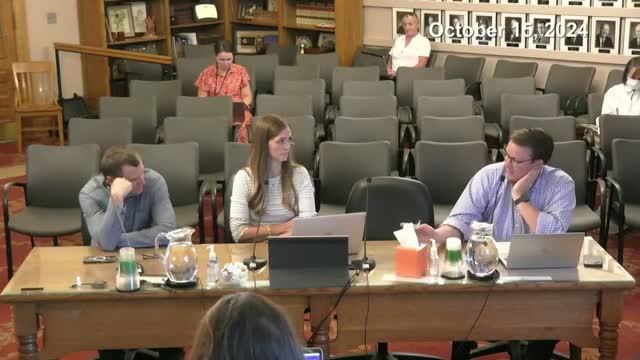Council debates crucial buffer zone changes for river protection
October 15, 2024 | Salt Lake City Work Session, Salt Lake City, Salt Lake County, Utah
This article was created by AI summarizing key points discussed. AI makes mistakes, so for full details and context, please refer to the video of the full meeting. Please report any errors so we can fix them. Report an error »

During a recent government meeting, council members discussed proposed changes to development regulations near the Jordan River, focusing on the existing 300-foot buffer zone established in a small area plan adopted last fall. Property owners seeking to develop the area expressed concerns that the buffer significantly limits their development potential.
The council reviewed three options for modifying the buffer: reducing its width, removing it in favor of development agreements, or allowing certain compatible uses within the buffer to generate financial benefits. Council member Dugan strongly advocated for maintaining the 300-foot buffer, emphasizing its importance for the health and safety of the region and the river ecosystem. He argued that the buffer is crucial for protecting water quality and preventing pollution.
Another council member expressed interest in exploring the third option, which would allow for some uses within the buffer while preserving its primary function. This member noted that the property owners are interested in conservation and agricultural easements, suggesting that a careful examination of potential uses could be beneficial without compromising the buffer's integrity.
The discussion also highlighted the need for clarity regarding what constitutes a healthy buffer, with concerns raised about allowing natural growth that could lead to invasive species affecting agricultural efforts. The council agreed to preserve the 300-foot buffer for now while remaining open to further discussions on how to make it more functional for both conservation and development needs.
In addition to the buffer discussions, property owners requested several specific changes to development regulations, including increasing maximum lot sizes and building heights, as well as modifying tree planting requirements. The council acknowledged these requests but emphasized the importance of maintaining environmental protections in the area.
Overall, the meeting underscored the delicate balance between development interests and environmental conservation, with council members committed to ensuring that any changes made do not compromise the health of the Jordan River and its surrounding ecosystem.
The council reviewed three options for modifying the buffer: reducing its width, removing it in favor of development agreements, or allowing certain compatible uses within the buffer to generate financial benefits. Council member Dugan strongly advocated for maintaining the 300-foot buffer, emphasizing its importance for the health and safety of the region and the river ecosystem. He argued that the buffer is crucial for protecting water quality and preventing pollution.
Another council member expressed interest in exploring the third option, which would allow for some uses within the buffer while preserving its primary function. This member noted that the property owners are interested in conservation and agricultural easements, suggesting that a careful examination of potential uses could be beneficial without compromising the buffer's integrity.
The discussion also highlighted the need for clarity regarding what constitutes a healthy buffer, with concerns raised about allowing natural growth that could lead to invasive species affecting agricultural efforts. The council agreed to preserve the 300-foot buffer for now while remaining open to further discussions on how to make it more functional for both conservation and development needs.
In addition to the buffer discussions, property owners requested several specific changes to development regulations, including increasing maximum lot sizes and building heights, as well as modifying tree planting requirements. The council acknowledged these requests but emphasized the importance of maintaining environmental protections in the area.
Overall, the meeting underscored the delicate balance between development interests and environmental conservation, with council members committed to ensuring that any changes made do not compromise the health of the Jordan River and its surrounding ecosystem.
View full meeting
This article is based on a recent meeting—watch the full video and explore the complete transcript for deeper insights into the discussion.
View full meeting

